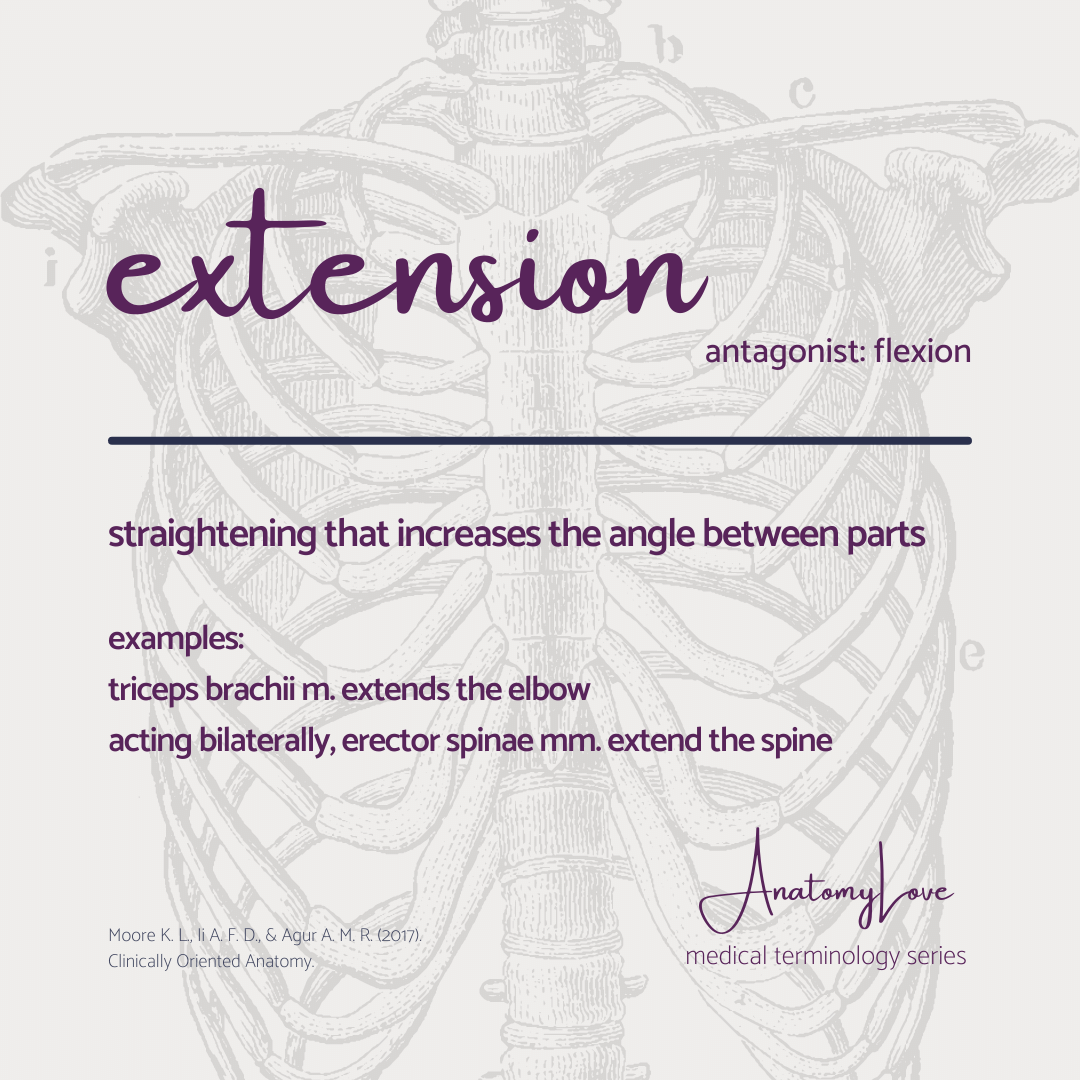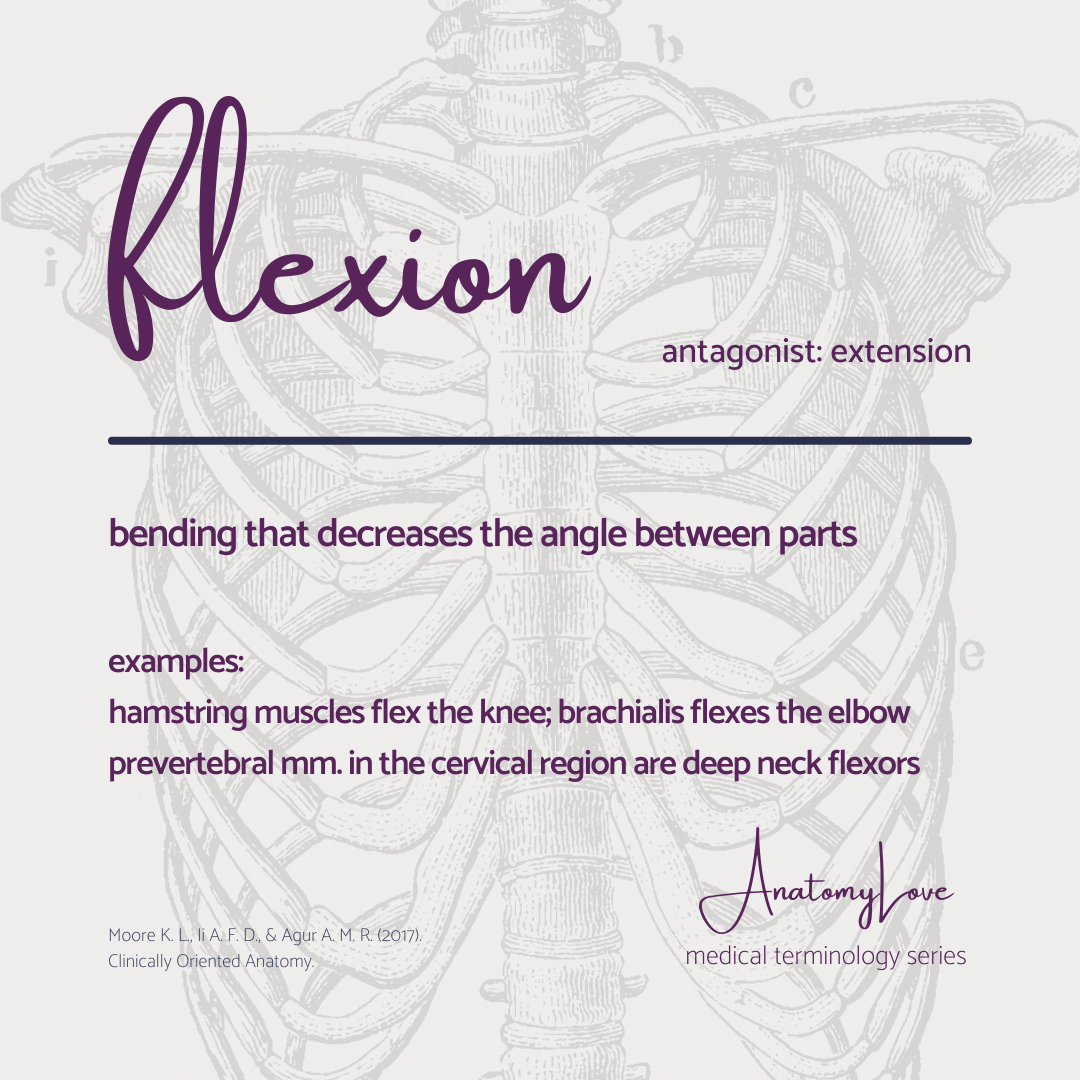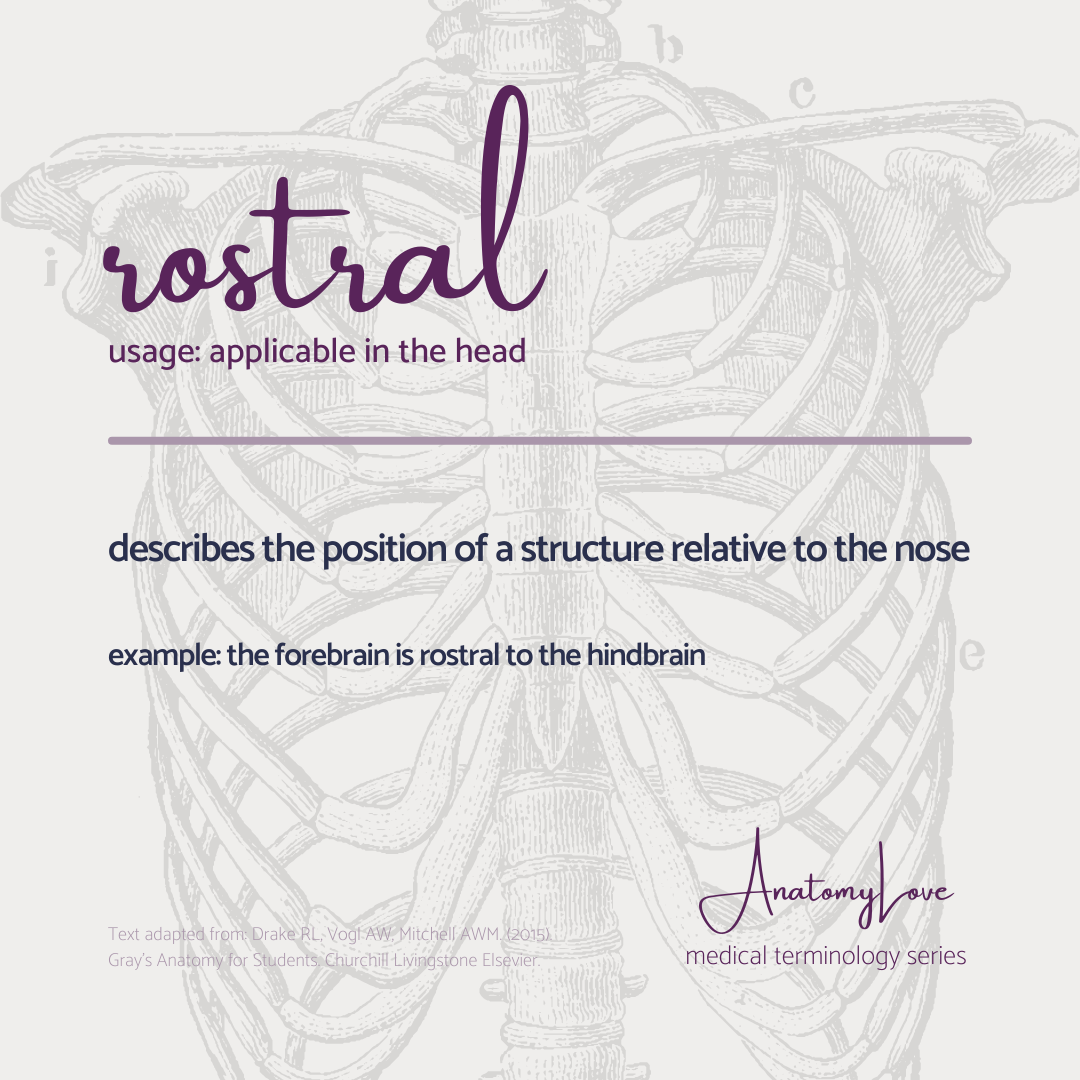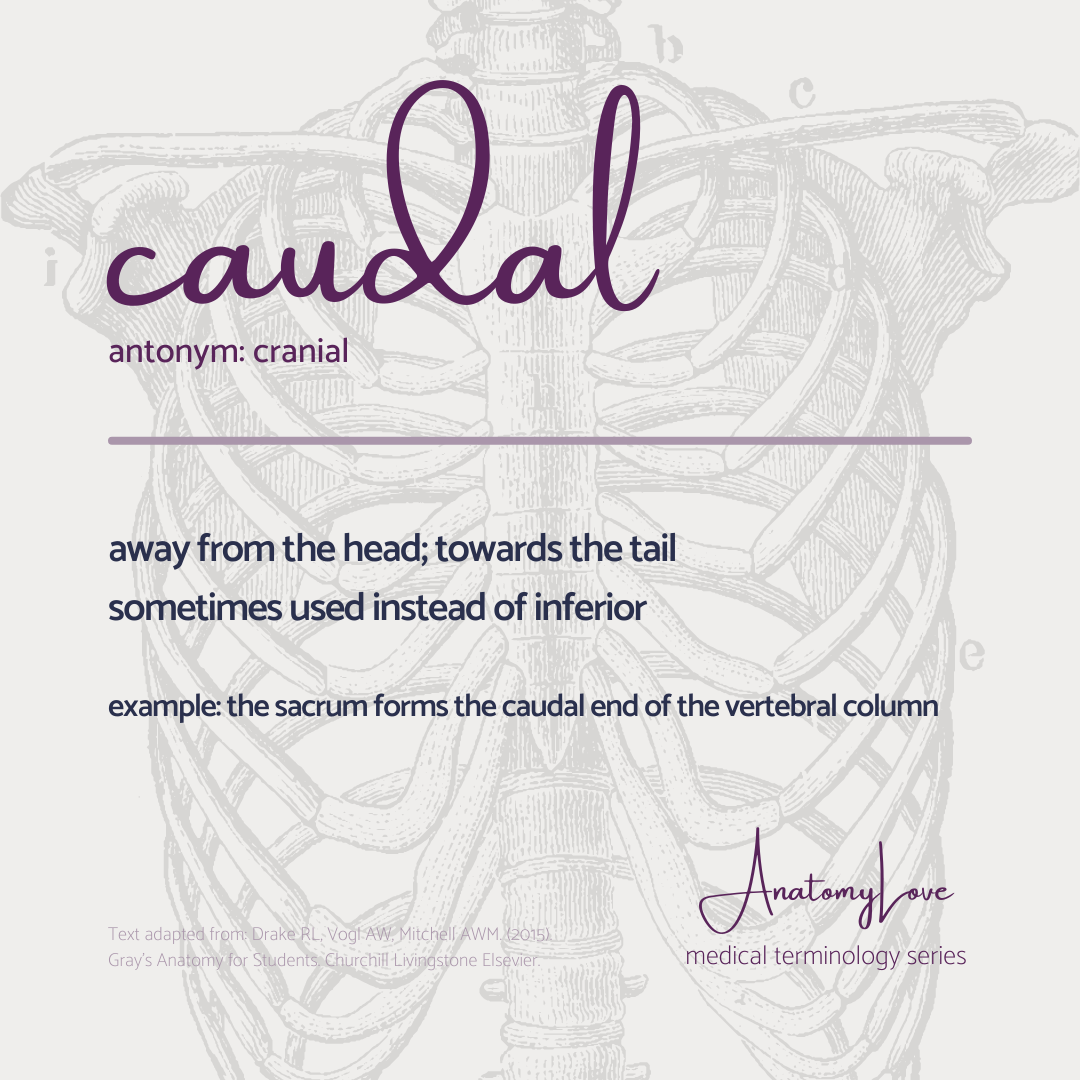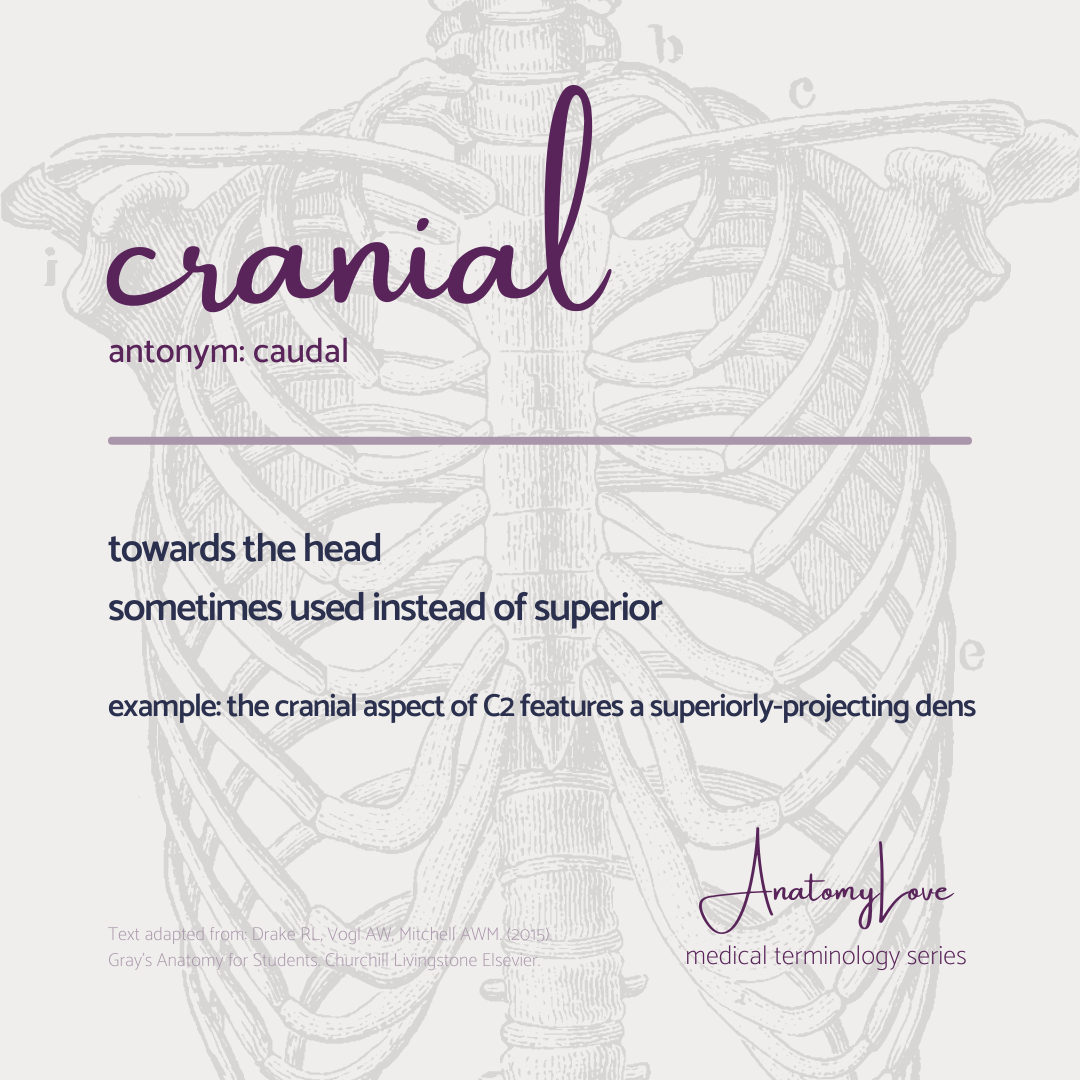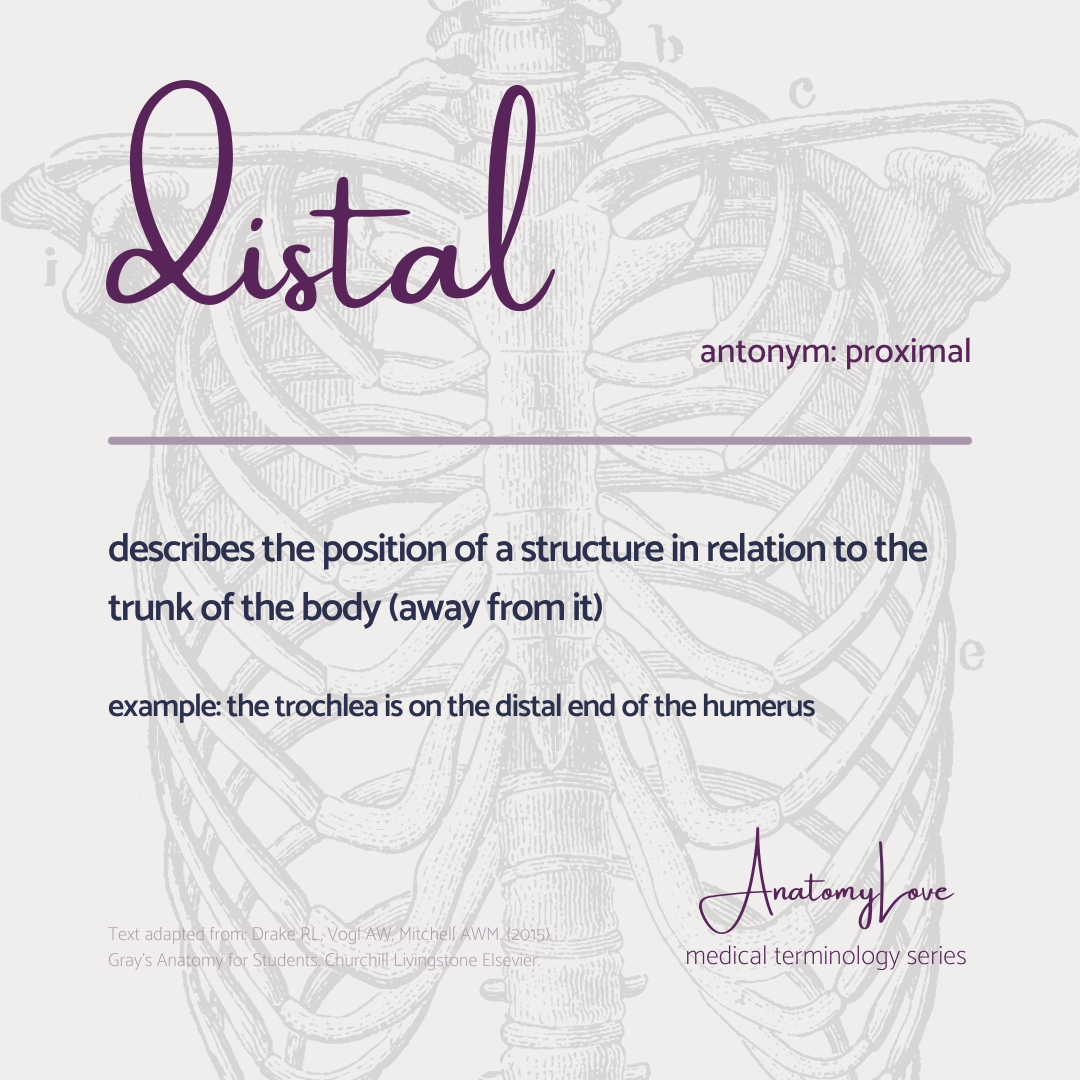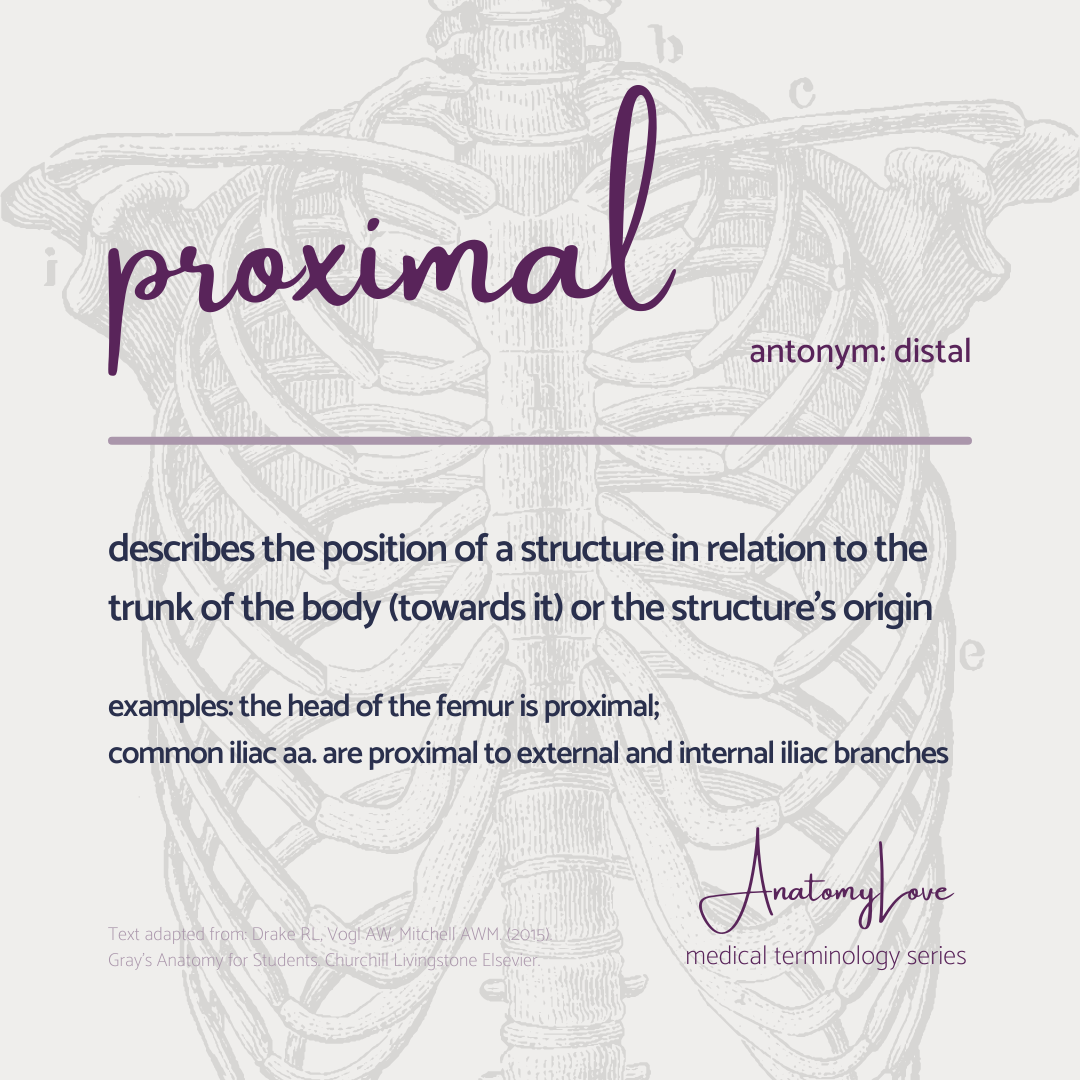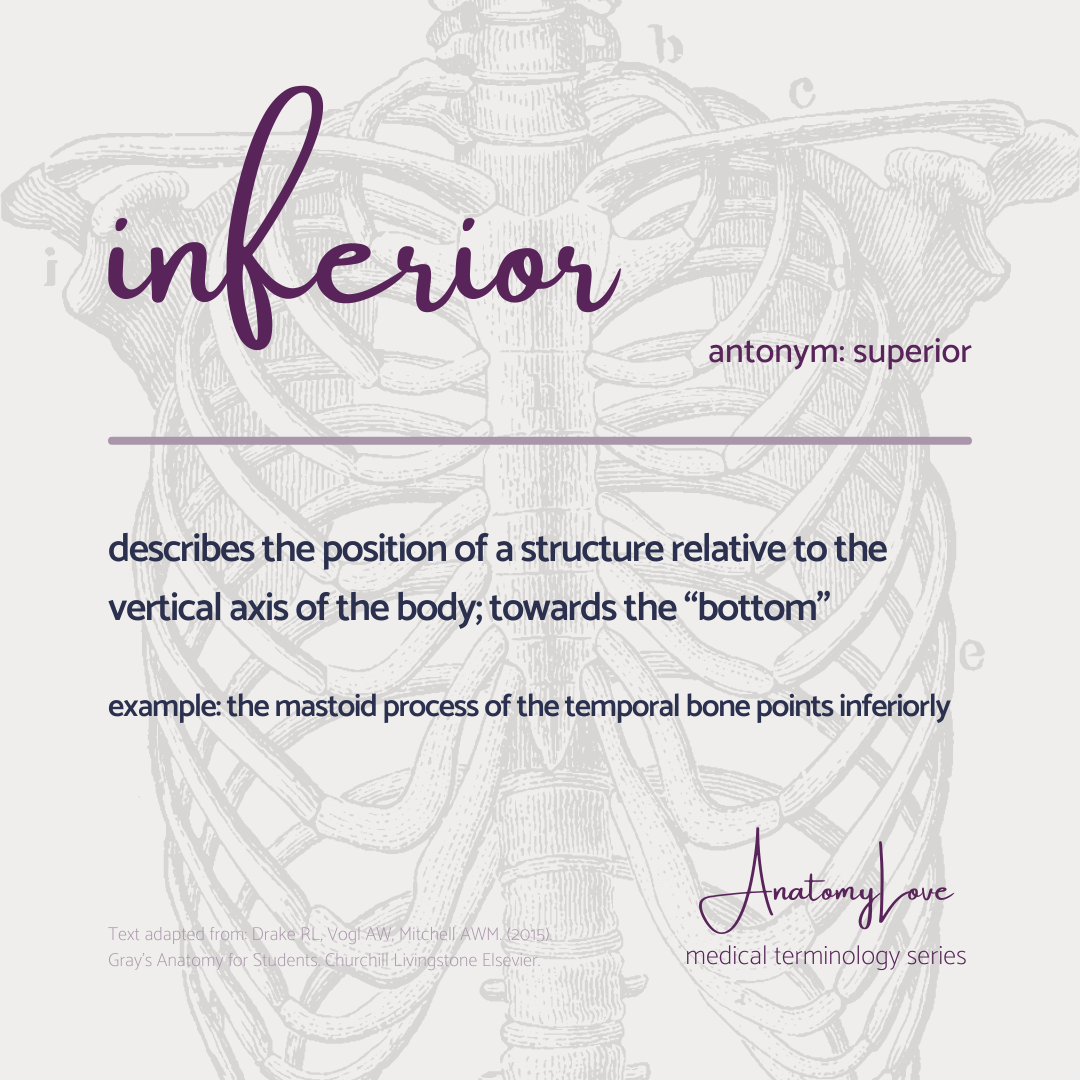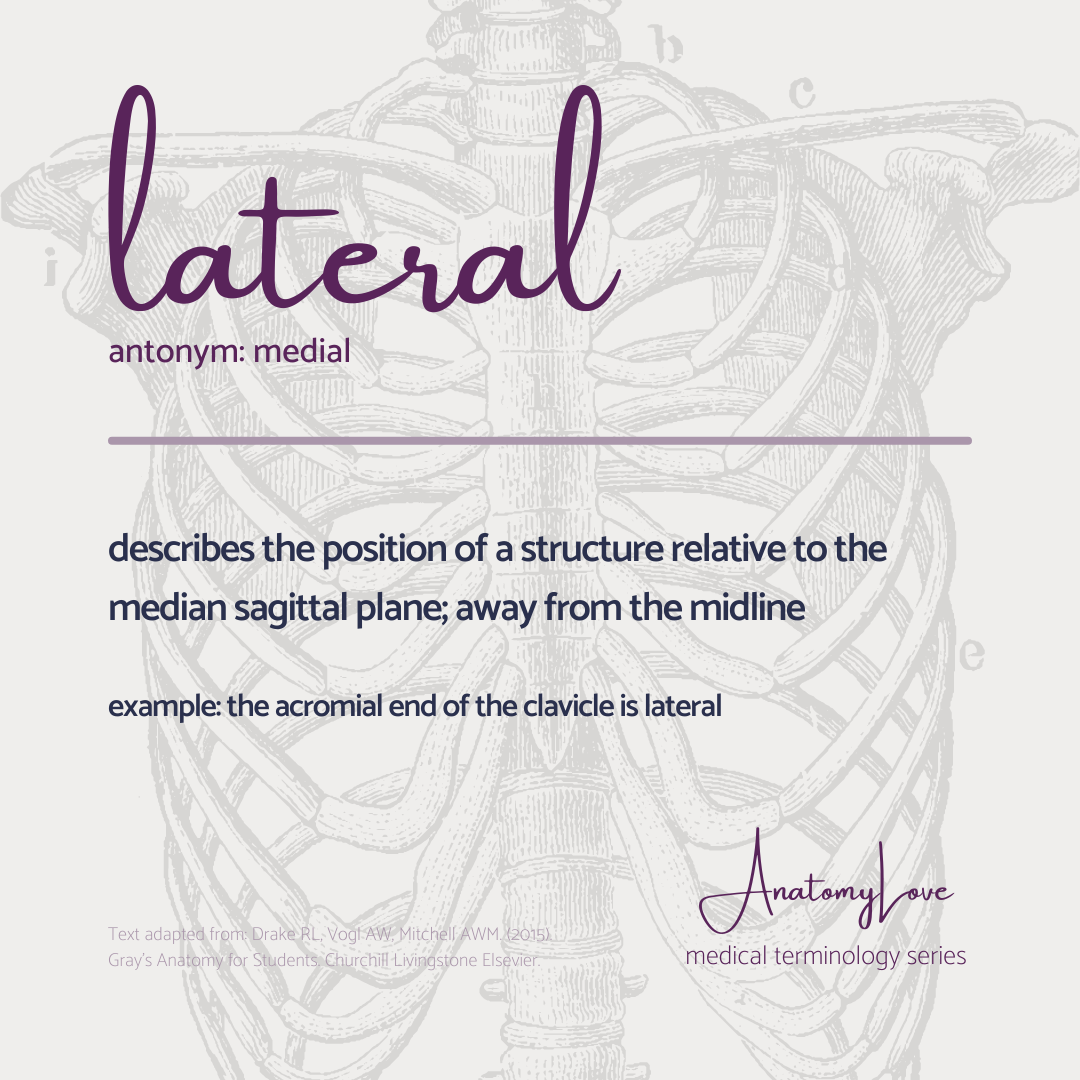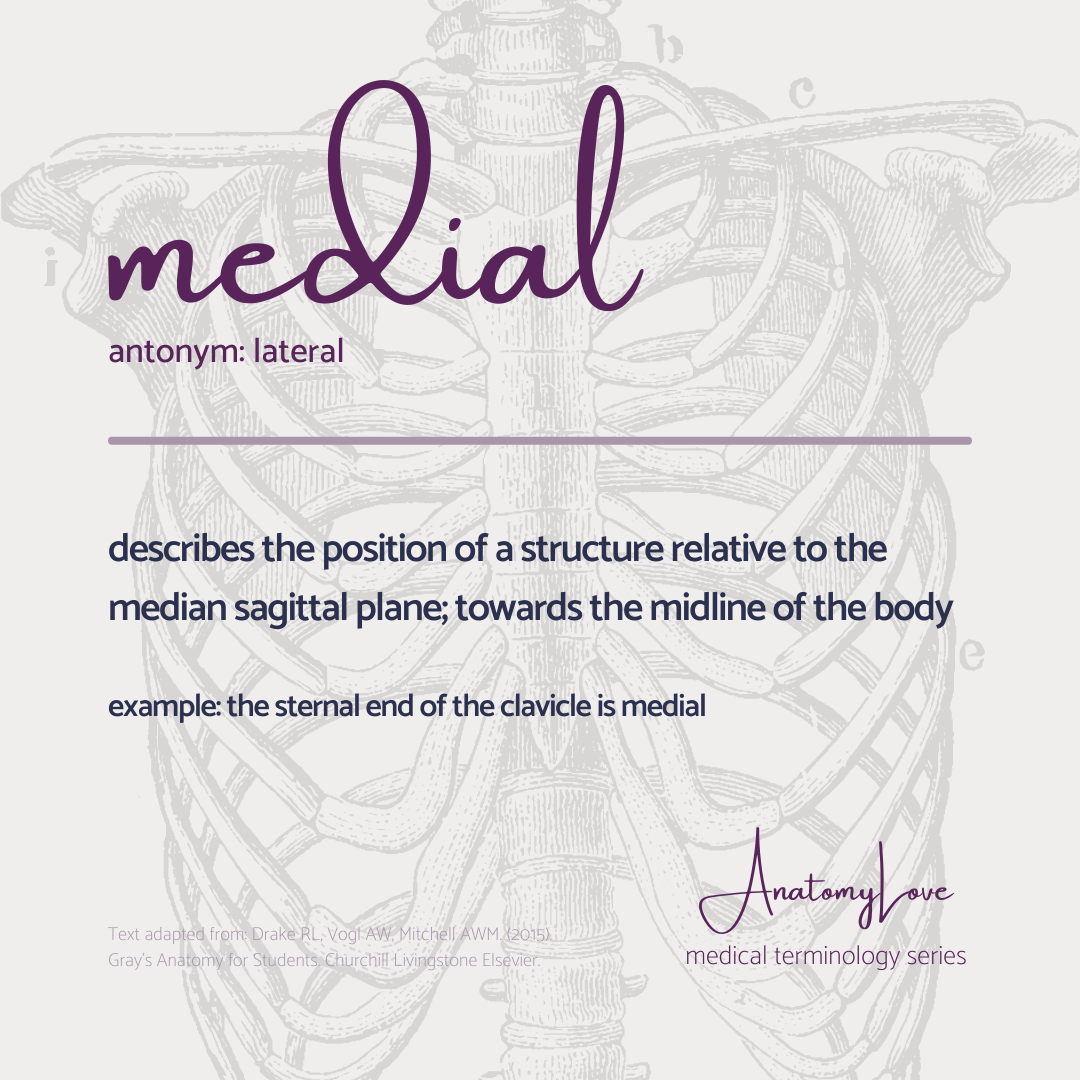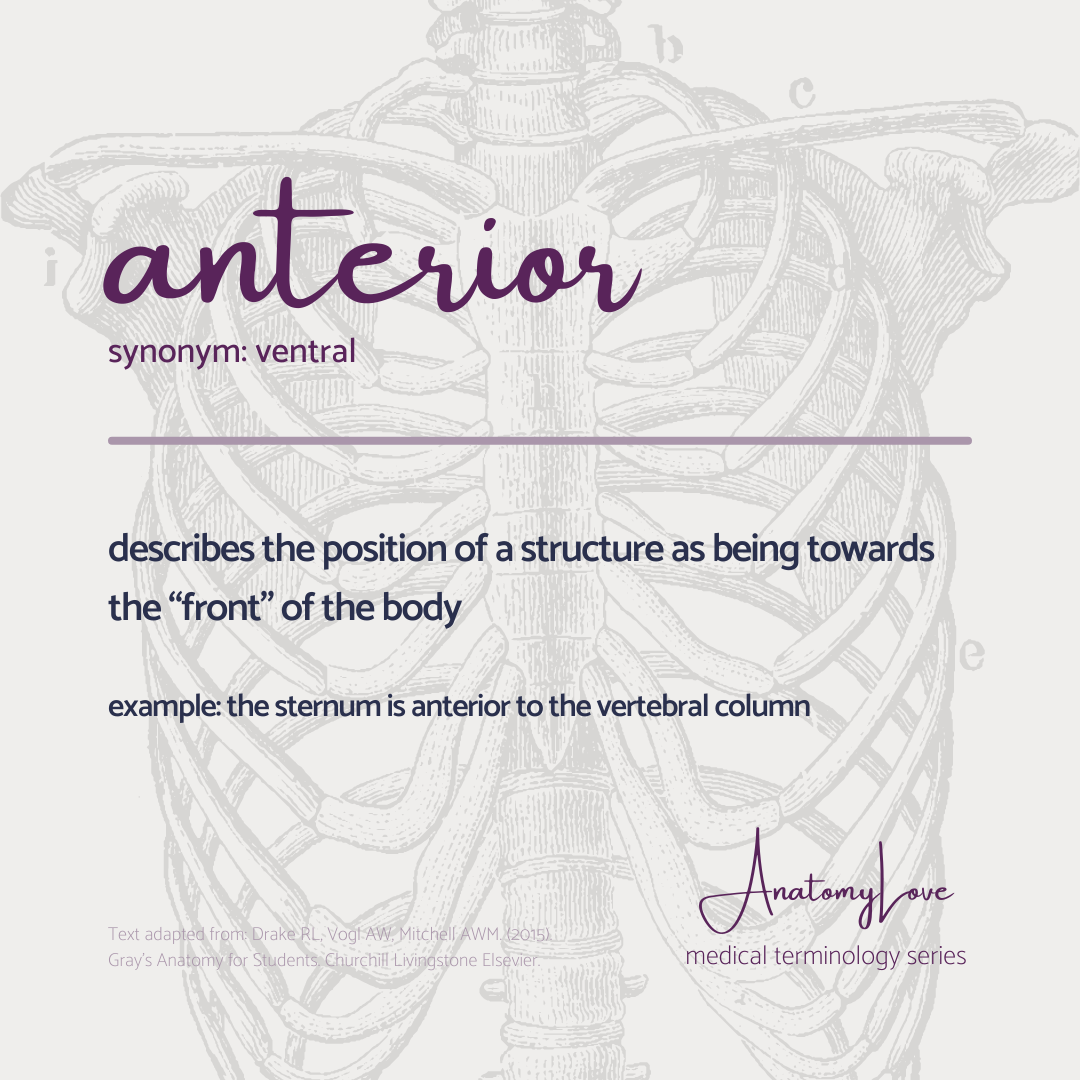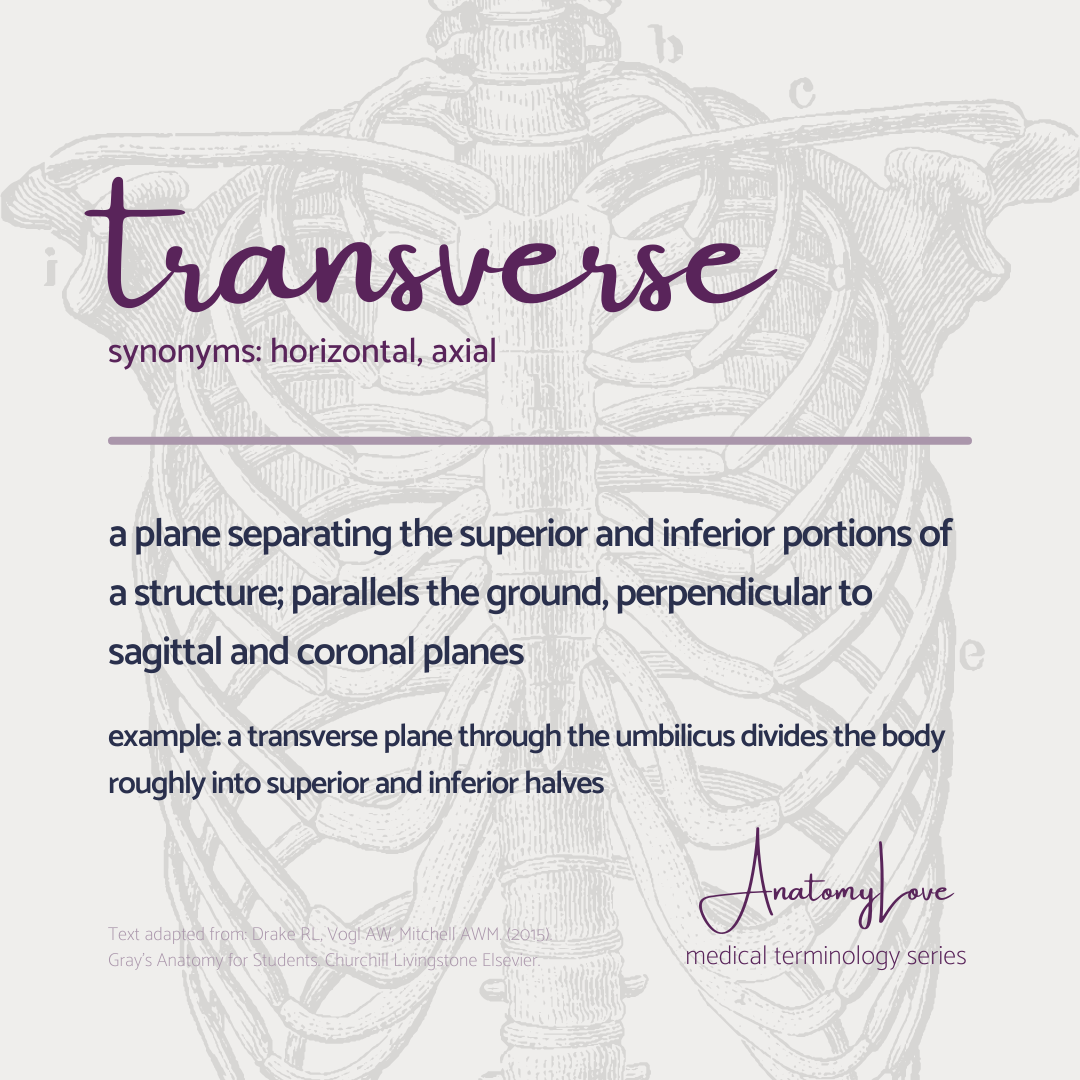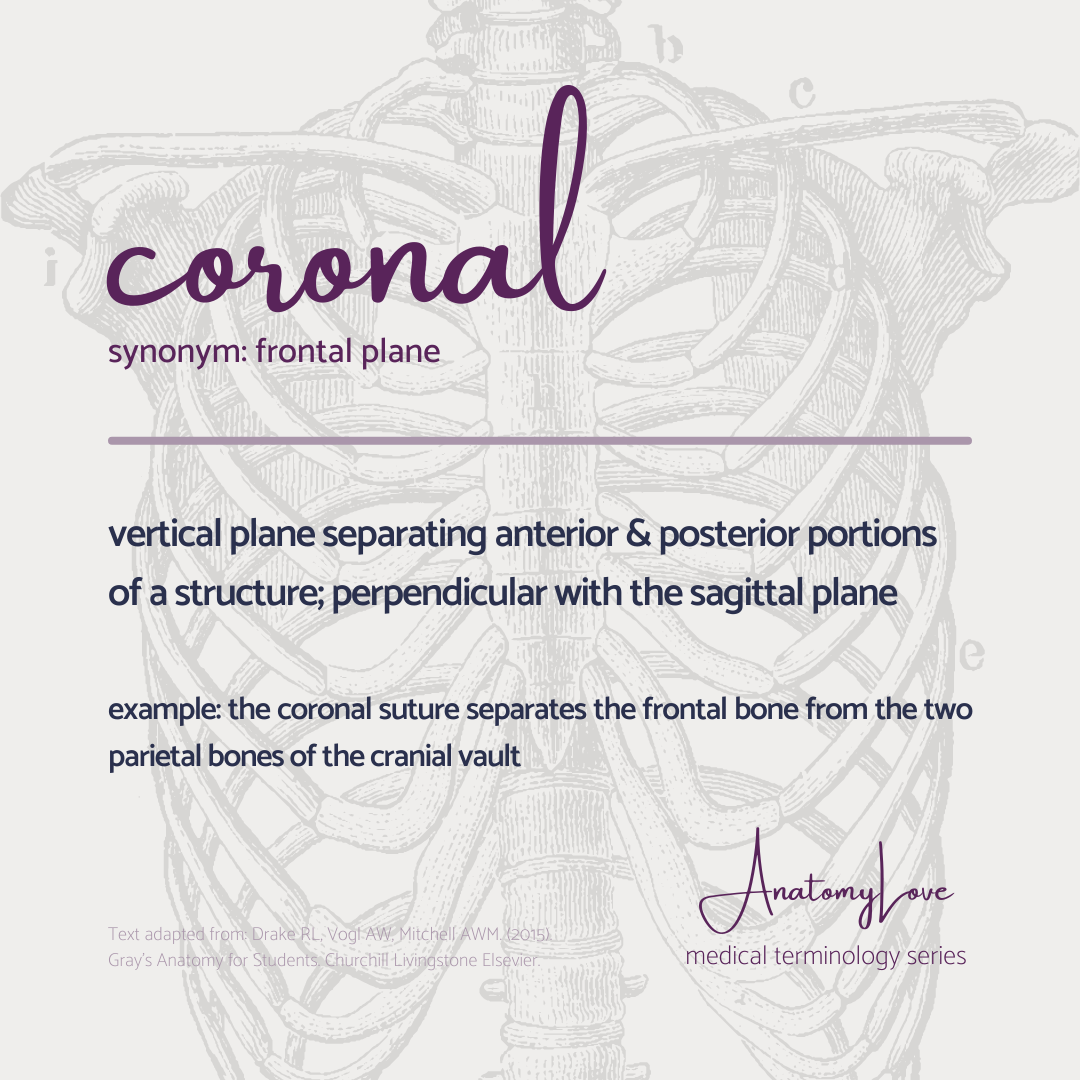Medical terminology
Learning anatomy can feel like learning a new language. Gaining mastery of a few key terms can go a long way towards being able to break down the names of new structures and/or work out their position or function. This post reviews commonly used medical terminology.
If you're new to learning anatomy it might feel like you're learning a whole new language (you are, in a way!). Thankfully, with the help of a few key terms we are able to work out naming conventions, the position of structures, what they supply or do, where they come from, or that they might come in a pair or other set of structures.
Let’s start with an example
If anatomists go to the trouble to name something the "anterior superior pancreaticoduodenal artery" (yes, that is a real thing!) then it tells you quite a lot about that vessel.
First, the inclusion of "anterior" usually implies there is a "posterior" version nearby
Similarly, "superior" means there is an "inferior" nearby
The "pancreaticoduodenal" part means that this vessel supplies portions of both the pancreas and duodenum
There are a total of four pancreatioduodenal vessels (anterior superior, anterior inferior, posterior superior, posterior inferior) and their names are trying to do you a solid in being named what they are, to help you remember!
How about another example!
That example was quite a mouthful so let's do another one that is a bit more straight-forward. How about the muscle "serratus posterior superior." From this term we can infer that:
At least a portion of the muscle is "serrated" like a knife
It is located near the back (posterior)
There is another one near the front (anterior)
If there is a "superior" one then we can assume there is an "inferior" one, too
Turns out, there are three "serratus" muscles of the trunk: serratus anterior, serratus posterior superior, serratus posterior inferior. Knowing a little bit of the medical terminology that went into naming those three helps us imagine where they might be, what shape they take, and how they are related to muscles nearby (in this case, that there is a pair of them on the back, and only one on the front since it is just serratus anterior).
Anatomy “hack”
Understanding medical terms is like an anatomy "hack." I hope these examples were useful! Practice using the proper terms because they are everywhere in anatomy. Soon, you won't even have to think about it! Woot!
Scroll through the terms below or download a PDF swipe file to study later!
If you’re new to learning anatomy and histology and need some ideas for good study tips or just a little boost, head over to the Motivation page on AnatomyLove. Or check out my favorite resources for anatomy and histology :D



